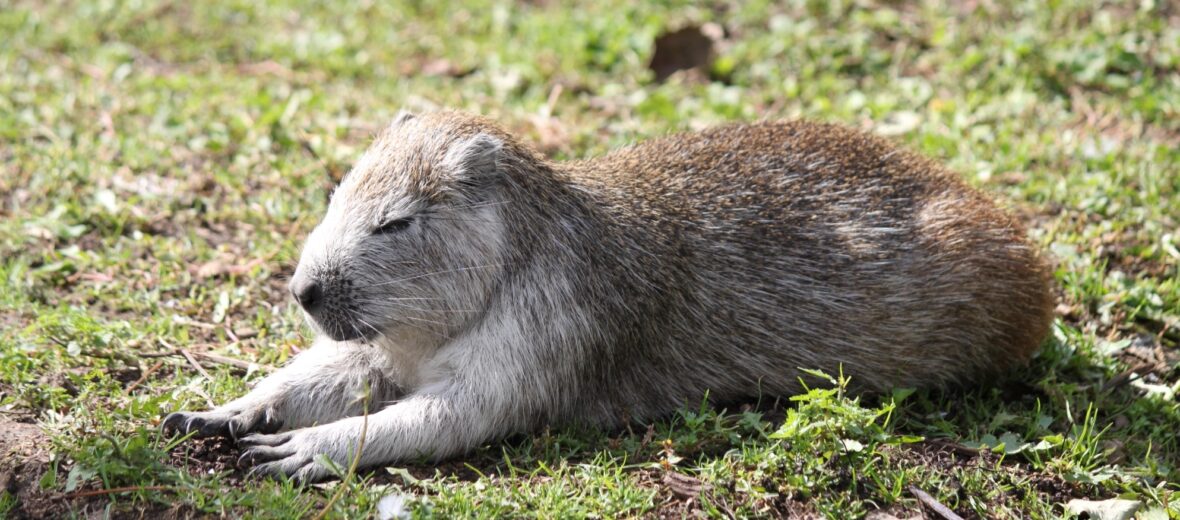
The Desmarest’s hutia, aka Cuban hutia, hails from Cuba. They tolerate a wide range of habitats, from mangroves to a more terrestrial (spend their lives on the ground) habitat. Due to their stable population and their distribution throughout all of Cuba and the smaller surrounding islands, these critters are listed as Least Concern by the IUCN.
First the Stats…
Scientific name: Capromys pilorides
Weight: Up to 19 lbs.
Length: Up to 24 inches, plus up to an 11.4 inch tail
Lifespan: Up to 11 years
Now on to the Facts!
1.) They typically walk with a waddling gait, but can hop quickly when chased by a predator.
2.) Their stomach is divided into 3 compartments and is considered among the most complex digestive system of any known rodent. Their stomachs are perfectly evolved to allow for the consumption of toxic leaves.
3.) Desmarest’s hutias can be found individually, in pairs, or in small family groups.
4.) These critters are diurnal (active during the day).
5.) Being omnivorous (eat both plant and animal matter), these rodents primarily consume leaves, bark, and fruit. But they have been known to occasionally take small vertebrates, like lizards.
But wait, there’s more on the Desmarest’s hutia!
6.) Both males and females scent mark their territory via urine.
7.) Breeding takes place year round.
Did you know…?
Their common name, Desmarest’s hutia, is named after Anselme Gaëtan Desmarest, who described the species in 1822.
8.) Females birth up to 3 young, after up to a 140 day gestation (pregnancy).
9.) The young are born precocial (self-sufficient at birth) being as they are covered with fur, eyes open, and able to walk.
10.) Traditionally, hutias were hunted for food in Cuba. Since their large size yielded a large meal.
But wait, there’s still more on the Desmarest’s hutia!
11.) Their primary predators are larger predatory birds and crocodiles.
12.) They communicate via high pitched squeaks.
13.) Being as they are rodents, their teeth constantly grow and need to be worn down or they will overgrow and prevent the hutia from eating.
14.) In some areas of Cuba, these rodents exists in larger groups and are considered a pest species, due to the crop destruction they can cause.
Now a Short Desmarest’s Hutia Video!
Be sure to share & comment below! Also, check out the Critter Science YouTube channel. Videos added frequently!
Want to suggest a critter for me to write about? Let me know here.



